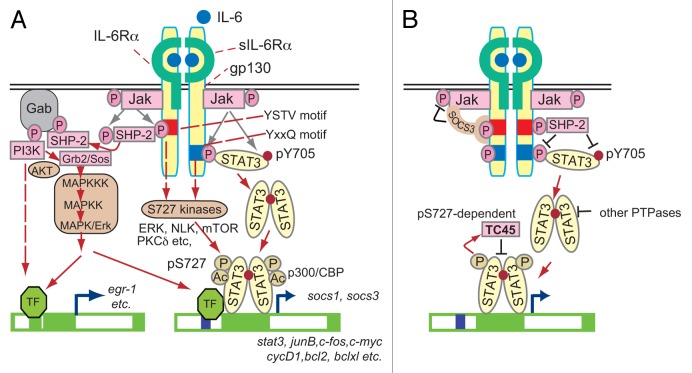Figure 2. (A) The IL-6 receptor system and its signaling pathways. The three major pathways are the STAT3-, the ERK-, and the PI3K/AKT-mediated pathways. These three pathways determine the response, depending on the cell context. STAT3 is modified by phosphorylation at Ser727 in addition to the phosphorylation at Tyr705. Several serine/threonine kinases for Ser727 are activated by IL-6. STAT3 is acetylated at multiple lysines by p300/CBP. These modifications affect the STAT3 activity with multiple mechanisms (not shown here). (B) Multiple layers of negative inhibitory loops determine the strength and duration of STAT3 activity. Newly synthesized SOCS3 restricts further activation of STAT3 by binding to tyrosine-phosphorylated gp130 and inhibiting JAK activity. SHP-2 also inhibits STAT3 activity by dephosphorylating phospho-Y705. Several other PTPases are known to dephosphorylate pY705 of STAT3 in the cytoplasm and nucleus. TC45 is a major nuclear PTPase for STAT3 and was recently shown to dephosphorylate phospho-Y705 of STAT3 in a phospho-Ser727-dependent manner.

An official website of the United States government
Here's how you know
Official websites use .gov
A
.gov website belongs to an official
government organization in the United States.
Secure .gov websites use HTTPS
A lock (
) or https:// means you've safely
connected to the .gov website. Share sensitive
information only on official, secure websites.
